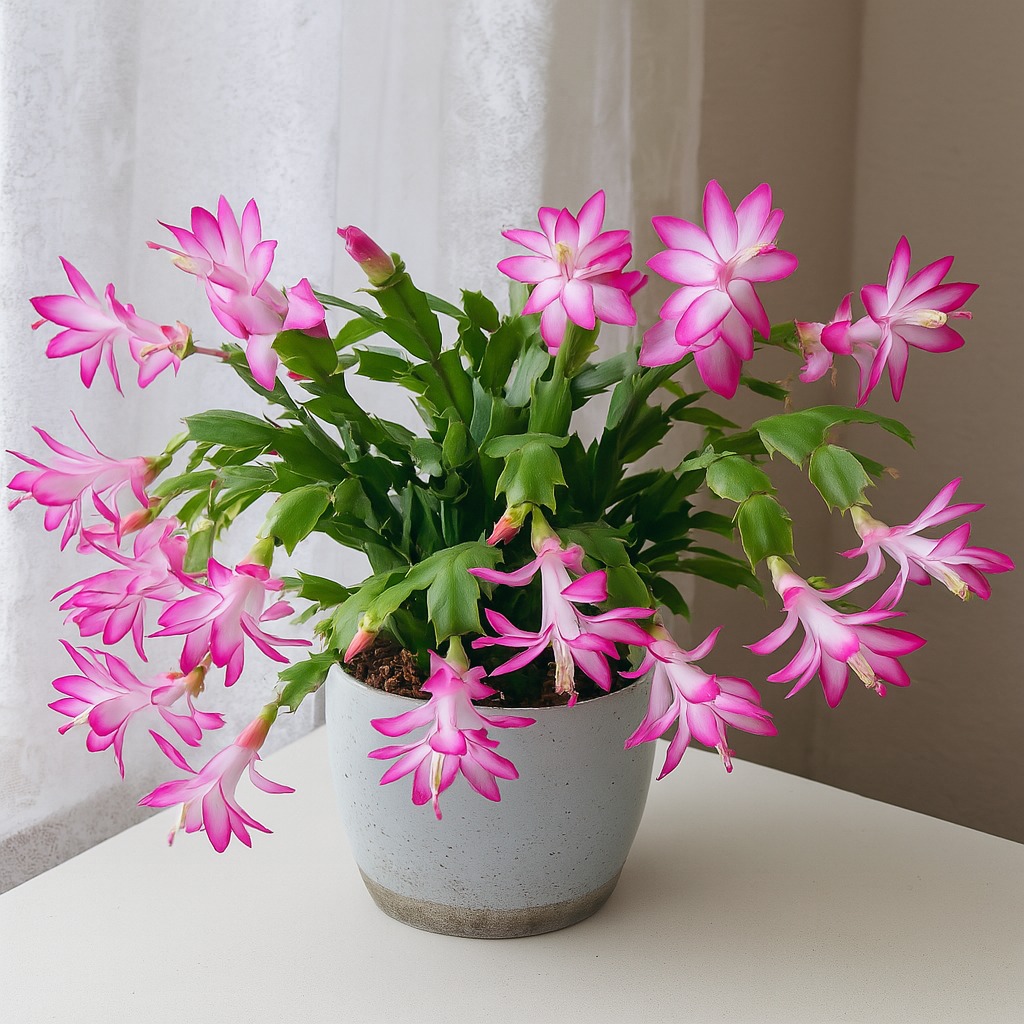One of the most critical factors in getting your Christmas Cactus to bloom is providing a dormancy period. Starting in early fall (September-October), reduce watering and keep the plant in a cool, dark place for about 6-8 weeks. During this time, the plant should receive 12-14 hours of darkness per day, which will help stimulate flower bud development.
5. Use the Right Soil and Fertilization
Christmas Cacti prefer well-draining soil, such as a mix designed for succulents or a combination of potting soil, sand, and perlite. Fertilize the plant monthly from spring to early fall with a balanced fertilizer (10-10-10) diluted to half strength. Stop fertilizing in mid-fall to encourage blooming.
6. Repot When Necessary
These plants prefer to be slightly root-bound, so repotting is only needed every 3-4 years or when the soil becomes compacted. If repotting, choose a container only slightly larger than the current one and refresh the soil.
7. Be Patient and Monitor Bud Formation
Once buds start to appear, avoid moving the plant or exposing it to temperature extremes, as this can cause bud drop. Continue watering lightly and providing bright, indirect light to support the blooming process.
Common Problems and Solutions
- Buds Falling Off Before Blooming – This is usually due to sudden temperature changes, overwatering, or moving the plant too often.
- Leaves Wrinkling or Shriveling – Indicates underwatering; gradually increase watering frequency.
- No Buds Forming – Likely due to insufficient darkness, incorrect temperatures, or lack of nutrients.
Final Thoughts
By following these steps, you can ensure that your Christmas Cactus thrives and rewards you with an abundance of beautiful blooms every season. With the right care, this stunning plant will continue to brighten your home for years to come!

